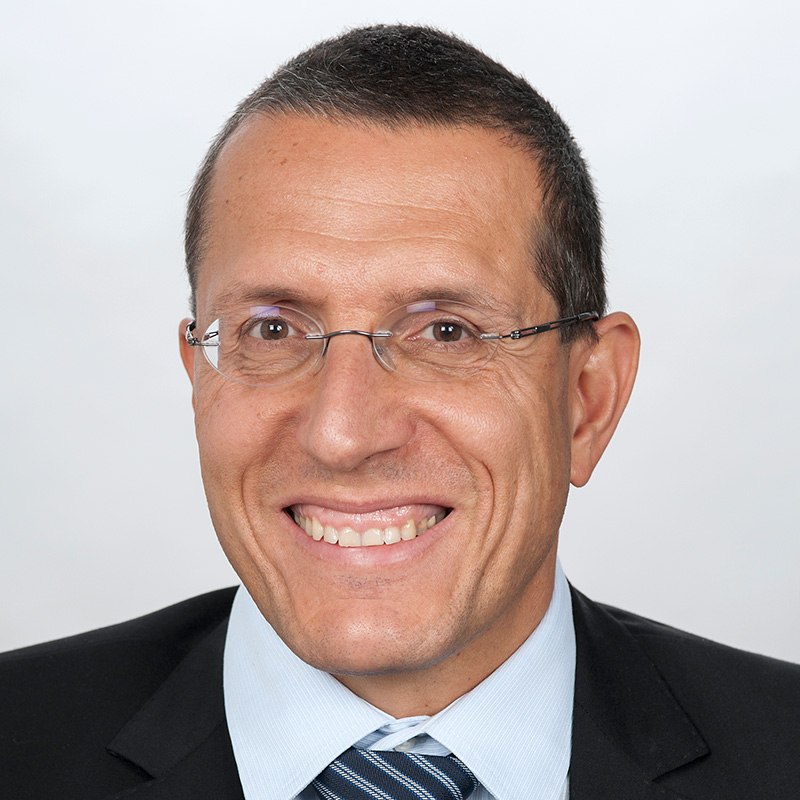Anton Sculean is professor and chairman of the Department of Periodontology and currently the Executive Director of the School of Dental Medicine, University of Berne, Switzerland. He qualified in 1990 at the Semmelweis University in Budapest, Hungary and has received his postgraduate training at the Universities Münster, Germany and Royal Dental College Aarhus, Denmark. He received his Habilitation (Ph.D.) at the University of Saarland, Homburg, Germany. From 2004 to 2008 he was appointed as Head of the Department of Periodontology and Program Director of the EFP accredited postgraduate program at the Radboud University in Nijmegen, the Netherlands. In December 2008, he was appointed Professor and Chairman of the Department of Periodontology of the University of Bern, Switzerland. Currently, he serves as Executive Chairman of the School of Dental Medicine, University of Bern. Professor Sculean has been a recipient of many research awards, among others the Anthony Rizzo Award of the Periodontal Research Group of the International Association for Dental Research (IADR), and the IADR/Straumann Award in Regenerative Periodontal Medicine and received honorary doctorates (Dr. h.c.) from the Semmelweis University in Budapest, Hungary and from the Victor Babes University in Timisoara, Romania. He has authored more than 280 publications in peer-reviewed journals, 16 chapters in periodontal textbooks and has delivered more than 350 lectures at national and international meetings. He is the editor of the book Periodontal Regenerative Therapy published by Quintessence and guest editor of the Periodontology 2000 Issue published in 2015 entitled “Wound Healing in Periodontology and Implantology”.
He serves on the editorial board of more than 12 dental journals, among others Journal of Dental Research, Journal of Clinical Periodontology, Clinical Oral Implants Research, Journal of Periodontal Research and Clinical Advances in Periodontics and is Associate Editor of Quintessence International, Clinical Oral Investigations, Section Editor of BMC Oral Health and Editor in Chief of Oral Health and Preventive Dentistry.
Professor Sculean served from 2009-2010 as president of the Periodontal Research Group of the IADR, is past president of the Swiss Society of Periodontology and President (for the period 2018-2019) of the European Federation of Periodontology (EFP). His research interests focus on periodontal wound healing, regenerative and plastic-esthetic periodontal therapy, use of antibiotics, antiseptics and novel approaches such as lasers and photodynamic therapy in the treatment of periodontal and peri-implant infections.
Click here for abstract:
 Predictable periodontal regeneration. From science to clinical implementation
Predictable periodontal regeneration. From science to clinical implementation
Reconstructive procedures in periodontology aim at regenerating the lost periodontal supporting tissues which have been lost following periodontal diesease. During the last decades, several treatment modalities including the use of bone grafting materials, barrier membranes, enamel matrix derivative, growth and differentiation factors or various combinations thereof, have been shown to promote periodontal regeneration (i.e. formation of cementum, periodontal ligament, alveolar bone and gingiva) to a varying extent. In carefully selected patients and defects, combined with a strict pre -and postoperative infection control, reconstructive periodontal surgery may lead to substantial clinical benefits evidenced by probing depth reduction, clinical attachment level gain and defect fill. Longitudinal studies have also provided evidence for long-term stability of the clinical outcomes, thus indicating that these techniques may improve tooth prognosis and long-term survival. The presentation will answer the question on the clinical benefit of reconstructive procedures for improving tooth prognosis and provide the clinician with an evidence based clinical concept for regenerative surgery in various indications.
 The Bernese concept for the treatment of single and multiple gingival recessions
The Bernese concept for the treatment of single and multiple gingival recessions
Predictable coverage of single and multiple gingival recessions can still represent a challenge for the clinician. The lecture will provide a comprehensive treatment philosophy on the risk factors and biologic principles that need to be considered to optimize the results. The use of the modified coronally advanced tunnel (MCAT) or the newly developed laterally moved double tunnel (LMDT) in conjunction with biologic factors such as enamel matrix proteins, connective tissue grafts, certain collagen based soft tissue grafts or combinations thereof may result in predictable coverage of single and multiple adjacent gingival recessions. Presentations of clinical cases and of surgical videos will demonstrate the step-by- step procedure for the MCAT and LMDT in the treatment of various types defects. Long-term results with a follow-up of up to 8 years support the clinical relevance of this concept.

